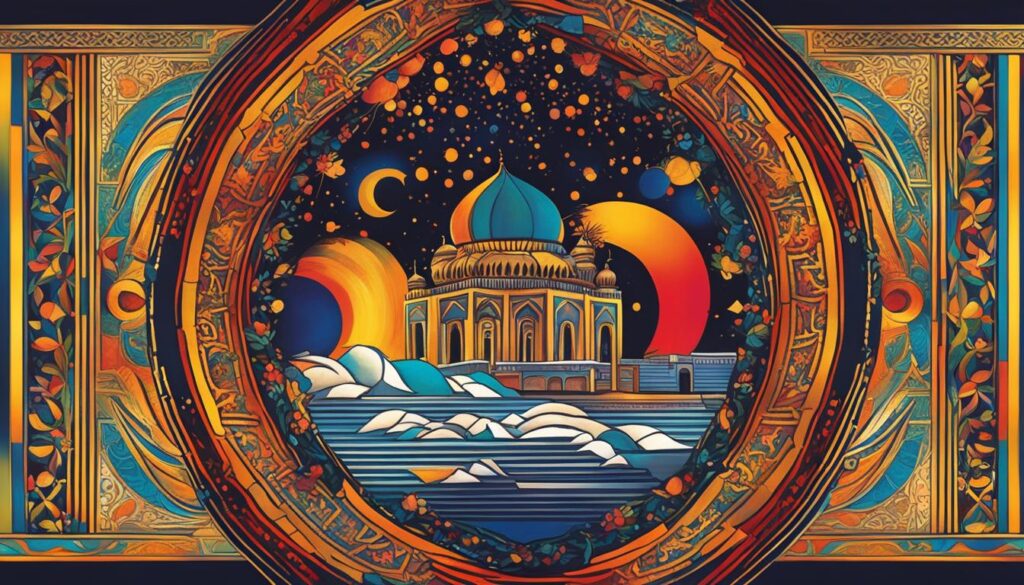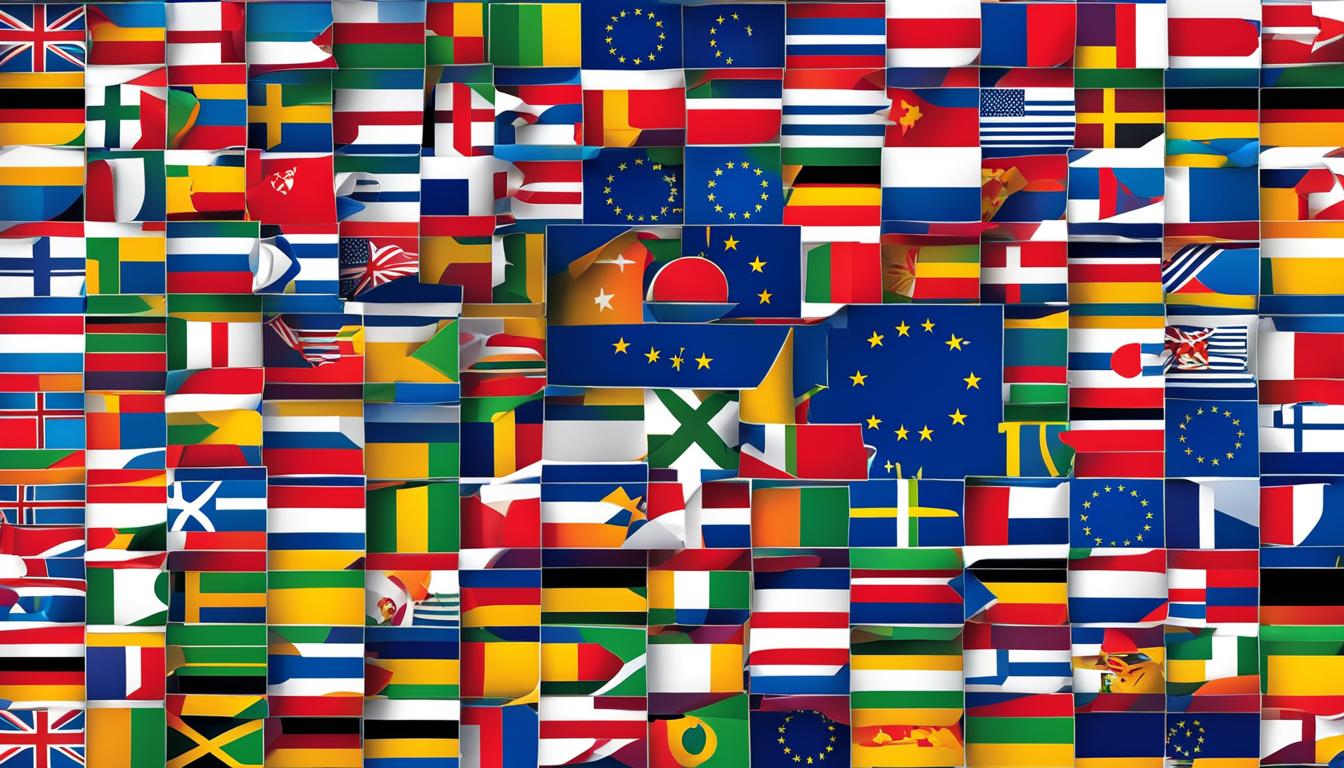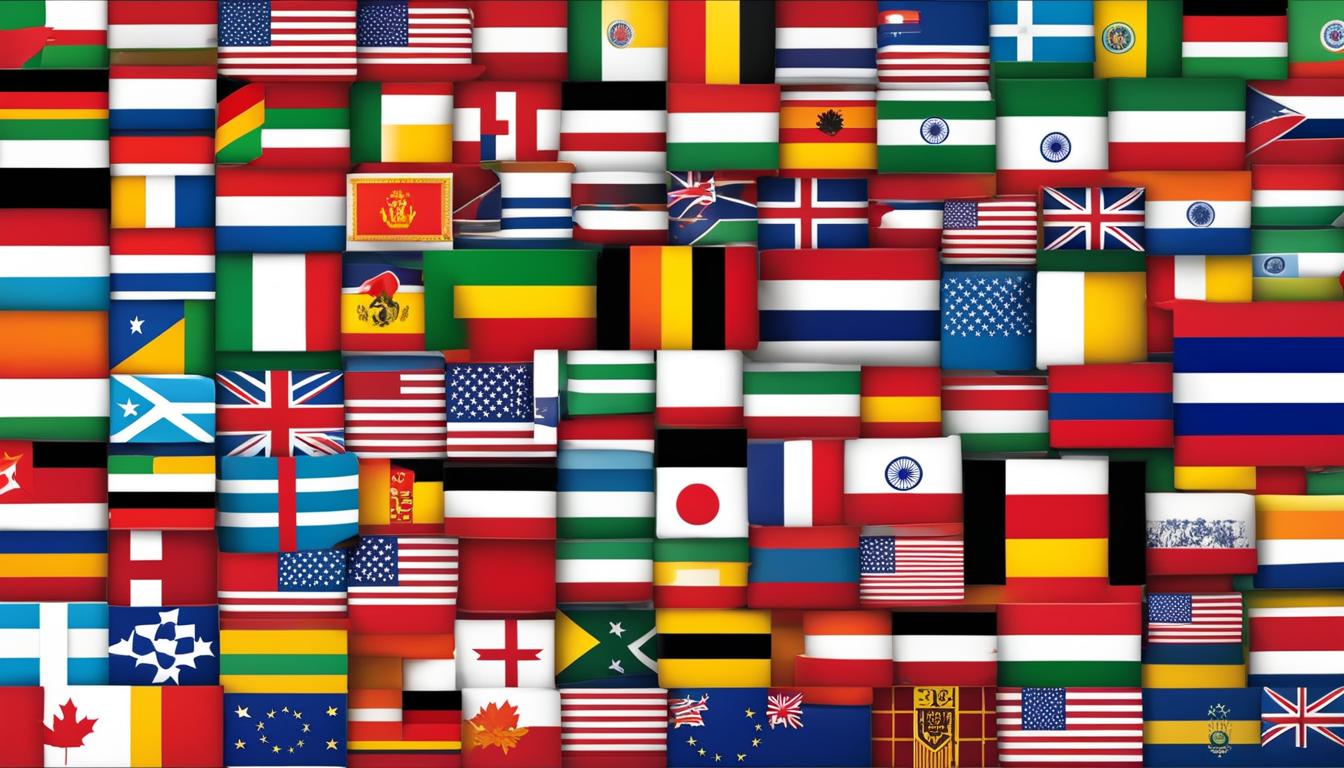The Middle East and North Africa (MENA) region is a diverse and multifaceted area that encompasses a wide range of cultures, histories, and geopolitical dynamics. While these regions share certain similarities, it is crucial to recognize and appreciate the distinctions that set them apart. Understanding these differences allows us to gain a deeper insight into the unique characteristics of the Middle East and North Africa.
- The Middle East and North Africa are distinct regions with their own unique characteristics.
- Recognizing and appreciating the differences between these regions fosters a greater understanding of global diversity.
- Investigating academic research, literature, and comparative analysis helps in gaining comprehensive knowledge.
- The MENA region should not be treated as a monolithic entity, as it encompasses a wide variety of cultures and histories.
- Exploring the distinctions between the Middle East and North Africa promotes cross-cultural understanding.
Cultural Erasure and the Importance of Storytelling for MENA Jews
Cultural erasure is a pressing issue faced by MENA Jews, as highlighted in Brandy B. Shufutinsky’s doctoral dissertation. This erasure is fueled by discrimination, ignorance, and the politicization of knowledge production, resulting in the marginalization and exclusion of these communities from academia. The preservation of their history and traditions is crucial for ensuring the visibility and recognition of MENA Jews.
Storytelling emerges as a powerful tool in the fight against cultural erasure. It enables MENA Jews to share their experiences, narratives, and heritage, ensuring that their voices are heard and their contributions acknowledged. Through storytelling, the rich tapestry of their cultural identity can be passed down from generation to generation, preserving their history amid attempts to erase it.
Preserving Identity through Oral Tradition
Oral traditions play a significant role in preserving cultural heritage within MENA communities. MENA Jews have a long history of oral storytelling, where knowledge, values, and traditions are transmitted through word of mouth. These stories provide a unique perspective on the region’s history and the experiences of MENA Jews, allowing future generations to connect with their roots and cultivate a sense of identity.
| Storytelling Method | Importance |
|---|---|
| Family stories and anecdotes | Preserve personal and collective memories, fostering a sense of belonging |
| Folk tales and legends | Convey moral lessons, cultural values, and historical events |
| Music and song | Express emotions, celebrate traditions, and pass down cultural practices |
Through the act of storytelling, MENA Jews reclaim their narratives, challenging cultural erasure and ensuring their history is not forgotten. This sharing of stories is a powerful act of resistance against the forces that seek to diminish their presence and contributions in the region.
Racial Formations in the Middle East and Africa
The concept of racial formations provides a framework for understanding the political conflicts, institutional structures, and identity dynamics shaped by race in the Middle East and Africa. The book “Racial Formations in Africa and the Middle East: A Transregional Approach” explores how conflicts in Israel/Palestine, labor exploitation in the Gulf, and issues related to slavery and nationalism in Ethiopia and Sudan are racially framed. It highlights the significance of race as a factor in shaping power relations and social dynamics in these regions.
The geopolitical dynamics of the Middle East and Africa play a crucial role in influencing racial formations. Political conflicts, such as the Israel/Palestine conflict, become racialized through the politicization of ethnic and religious identities. In this context, race becomes a tool for justifying power imbalances and maintaining social hierarchies. Understanding the racial dimensions of such conflicts can shed light on the complexities of these geopolitical dynamics.
Moreover, racial formations are not limited to conflicts but also permeate social structures and institutions in the Middle East and Africa. For example, labor exploitation in the Gulf is often linked to racial hierarchies, with migrant workers from South Asia and Africa facing discriminatory treatment based on their race. Similarly, issues related to slavery and nationalism in Ethiopia and Sudan are deeply intertwined with racial identities and have profound implications for social and political dynamics in these countries.
| Conflict/Issue | Geopolitical Region | Racial Dimensions |
|---|---|---|
| Israel/Palestine conflict | Middle East | Racialized politicization of ethnic and religious identities |
| Labor exploitation in the Gulf | Middle East | Racial hierarchies and discrimination against migrant workers |
| Slavery and nationalism | Africa | Racial identities shaping social and political dynamics |
Racial Formations in the Israel/Palestine Conflict
The Israel/Palestine conflict is a prime example of racial formations in the Middle East. The conflict is often framed in terms of the racial and religious identities of Israelis and Palestinians, with both sides using race as a tool for political mobilization and justification of their respective claims to the land. This racialization of the conflict perpetuates divisions and contributes to the ongoing tensions in the region.
Racial Hierarchies in Labor Exploitation
Labor exploitation in the Gulf countries, such as Qatar and the United Arab Emirates, is characterized by racial hierarchies. Migrant workers from South Asia and Africa, often from low-income communities, face unequal treatment based on their race. They are subjected to exploitative working conditions, low wages, and limited rights, perpetuating a cycle of racial discrimination and economic inequality.
Race and Identity in Ethiopia and Sudan
Issues of slavery and nationalism in Ethiopia and Sudan are deeply connected to racial identities. The historical legacy of slavery has shaped social hierarchies based on race, with specific ethnic groups being marginalized and stigmatized. Nationalism and ethnic conflicts in these countries often revolve around racialized identities, further exacerbating social tensions and political instability.
Literature as a Window into the Distinctions of the Middle East and North Africa
MENA literature offers a unique perspective into the cultural diversity, social dynamics, and political landscapes of the Middle East and North Africa. Through various works of fiction and non-fiction from authors of the region, readers can immerse themselves in the rich tapestry of experiences and gain a deeper understanding of these complex regions.
Exploring MENA literature allows us to witness the intricate nuances of different countries and communities within the Middle East and North Africa. It provides a glimpse into the historical events, social issues, and cultural traditions that shape the identities and perspectives of individuals in the region. By delving into the pages of novels, memoirs, and poetry, we can gain insights into the lives of people from various backgrounds and gain empathy for their unique experiences.
Moreover, MENA literature serves as a powerful tool for challenging stereotypes and promoting cross-cultural understanding. Through literary works, authors challenge preconceived notions and shed light on the complexities of the Middle East and North Africa. They bring to the forefront the voices of marginalized individuals, providing a platform for their stories to be heard and understood.
Recommended Books for Exploring MENA Literature:
- The Kite Runner by Khaled Hosseini
- A Thousand Splendid Suns by Khaled Hosseini
- The Yacoubian Building by Alaa Al Aswany
- Palace Walk by Naguib Mahfouz
- Season of Migration to the North by Tayeb Salih
These books provide a glimpse into the cultural richness and social intricacies of the Middle East and North Africa. They allow readers to explore the narratives of individuals from different walks of life and gain a greater appreciation for the complexities of these regions.

By diving into the pages of MENA literature, we can cultivate a deeper understanding of the Middle East and North Africa, celebrating their cultural diversity and embracing the unique perspectives that emerge from these regions.
Conclusion
Through a comparative analysis of the Middle East and North Africa (MENA), we have gained a comprehensive understanding of the distinctive characteristics that shape these regions. The exploration of academic research, storytelling, literature, and cultural diversity has provided valuable insights into the complex dynamics and geopolitical aspects of the MENA region.
By recognizing these distinctions, we can foster a greater appreciation for cultural diversity and promote cross-cultural understanding. Comparative analysis allows us to acknowledge the unique cultures, histories, and traditions that define the Middle East and North Africa, paving the way for meaningful connections and exchanges between different societies.
Cultural appreciation is essential in dismantling stereotypes and biases that often arise from limited knowledge and misperceptions. By delving into the rich literature and diverse perspectives of MENA authors, we can gain a deeper insight into the social and political landscapes of these regions. This literary exploration offers a window into the complexities of the Middle East and North Africa, fostering empathy and understanding.
As we conclude our exploration of the distinctions between the Middle East and North Africa, it becomes evident that recognizing and appreciating the uniqueness of each region is crucial. A deeper understanding of their histories, cultures, and geopolitical aspects allows us to celebrate the diversity of our global community and build bridges of understanding across borders.
FAQ
What are the distinctions between the Middle East and North Africa?
The Middle East and North Africa (MENA) region encompass diverse cultures, histories, and geopolitical aspects. While both regions share some similarities, there are also distinct differences that set them apart.
What is cultural erasure and its significance for MENA Jews?
Cultural erasure is a significant issue faced by MENA Jews, driven by discrimination, ignorance, and politicization of knowledge production. This marginalizes and excludes these communities from academia. Storytelling serves as a powerful tool for combating cultural erasure, allowing MENA Jews to share and preserve their experiences, traditions, and history.
How does the concept of racial formations apply to the Middle East and Africa?
The book “Racial Formations in Africa and the Middle East: A Transregional Approach” explores how conflicts in Israel/Palestine, labor exploitation in the Gulf, and issues related to slavery and nationalism in Ethiopia and Sudan are racially framed. It highlights the significance of race in shaping power relations and social dynamics in these regions.
How can MENA literature help us understand the distinctions between the Middle East and North Africa?
MENA literature offers valuable insight into the cultural diversity, social dynamics, and political landscapes of the Middle East and North Africa. By exploring works of fiction and non-fiction from authors of the region, readers can gain a deeper understanding of these regions’ unique perspectives and traditions.
How can exploring the distinctions between the Middle East and North Africa promote cross-cultural understanding?
Exploring the distinctions between these regions through various sources allows for a comprehensive understanding of their complex dynamics. By recognizing and appreciating their unique cultures, histories, and geopolitical aspects, we can foster a greater appreciation for global diversity and promote cross-cultural understanding.
 Skip to main content
Skip to main content


